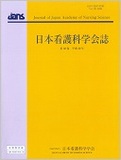Japanese
English
- 販売していません
- Abstract 文献概要
- 参考文献 Reference
要旨
目的:二次元レジリエンス要因尺度(BRS; Bidimensional Resilience Scale)の信頼性と妥当性を看護学生と看護師で検討する.
方法:看護学生246名と看護師881名に自記式質問紙調査を実施した.BRSについて,Cronbachのα,精神的回復力尺度(ARS; Adolescent Resilience Scale)との相関・偏相関分析,共分散構造分析による高次因子分析を行った.
結果:看護学生230名と看護師742名から有効回答を得た.高次因子分析により2尺度(資質/獲得RS)7因子の2次元構造が確認された.統御力を資質RSから獲得RSに移行したモデルでの適合度改善はなかった.Cronbachのαは0.49〜0.85であり,ARSと有意な相関があった.
結論:BRSの信頼性と妥当性は確認されたが,一部因子では結果の解釈に注意が必要である.
Objectives: This study aimed to determine the reliability and validity of the Bidimensional Resilience Scale (BRS) among nursing students and nurses.
Methods: A cross-sectional study using a self-administered questionnaire was conducted on 246 students in a nursing school and 881 nurses in 4 hospitals in Japan. The questionnaire included demographics, the BRS, and the Adolescent Resilience Scale (ARS). Analyses included the Cronbach's alpha, correlation coefficient, partial correlation coefficient, and higher-order factor analysis using a covariance structure analysis.
Results: 230 nursing students (response rate: 93.5%) and 742 nurses (84.2%) replied. The result of the higher-order factor analysis of the BRS indicated a two-dimensional structure with two scales (innate and acquired resilience scales) and seven factors. In the revised model, the factor named “control” that was earlier included in innate resilience scale was moved to the acquired resilience scale, following which, no remarkable higher goodness of fit was obtained. The Cronbach's alpha for the two scales were 0.79-0.80, and those for the 7 factors were 0.49-0.85. The BRS score correlated with ARS score.
Conclusions: The reliability and validity of the BRS were confirmed on a sample of nursing students and nurses. However, the findings on some factors need to be interpreted with caution.
Copyright © 2018, Japan Academy of Nursing Science. All rights reserved.


